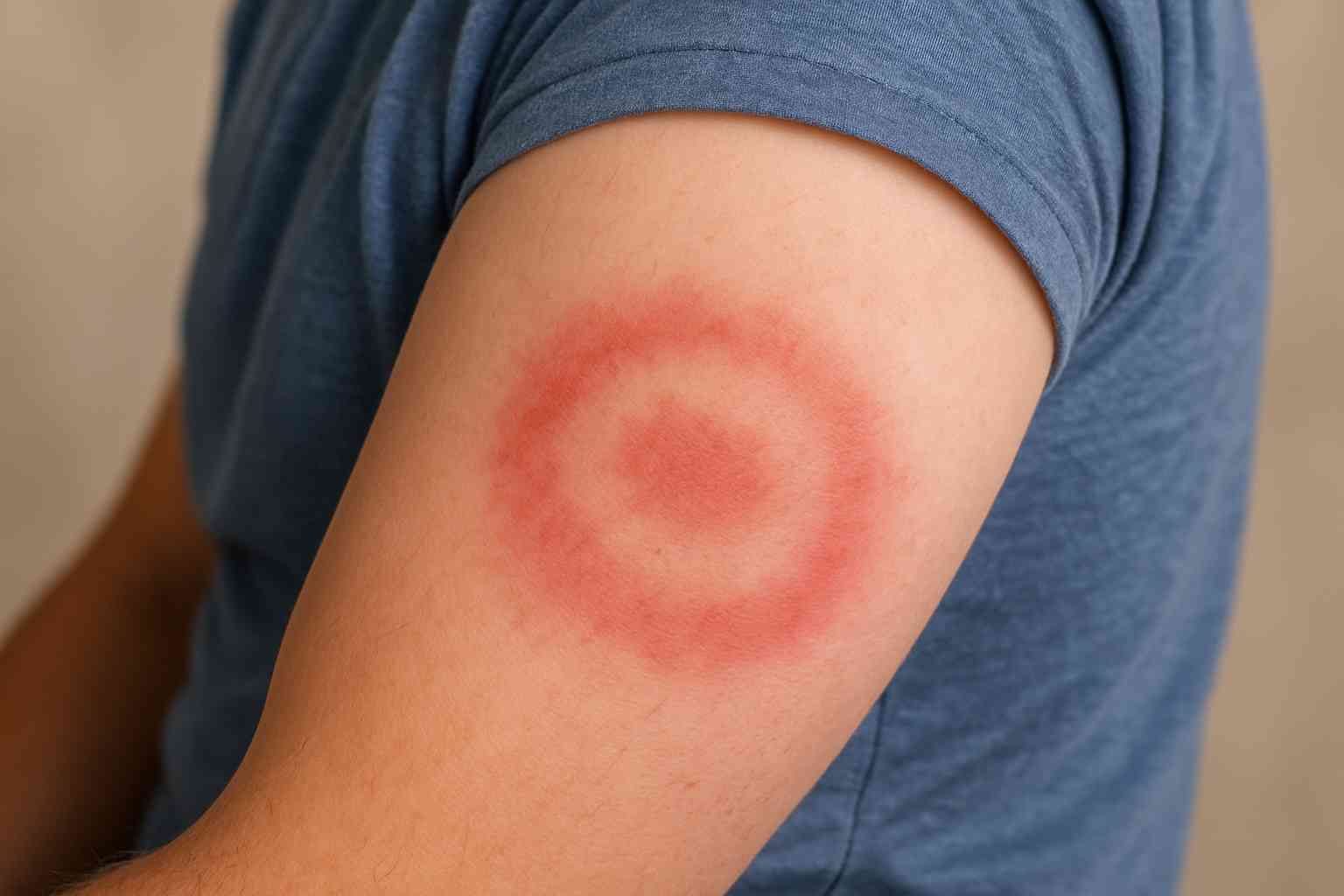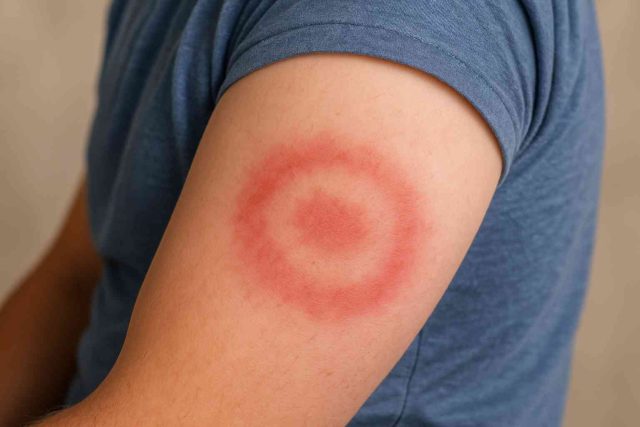
You’ve just returned from a hike, brushed off a tick, and now you’re wondering: how soon could Lyme disease symptoms appear? That question is more than curiosity; it could determine whether you get treatment early or suffer long-term effects. Lyme disease is a bacterial infection transmitted by the bite of infected black-legged ticks, and recognizing its early signs can make a big difference.
Table of Contents
- Early Onset of Lyme Disease Symptoms
- What to Expect in the First 30 Days
- Late-Stage and Chronic Lyme Symptoms
- When to Seek Medical Attention
- Conclusion
- FAQs
Early Onset of Lyme Disease Symptoms
In most cases, Lyme disease symptoms begin within 3 to 30 days after a tick bite. However, the variability in timing can complicate early diagnosis. The most common early sign is the development of an erythema migrans (EM) rash, often referred to as the “bull’s-eye” rash. While this rash appears in about 70-80% of infected individuals, not everyone develops it.
The rash typically shows up within 7 to 14 days after the bite but can emerge as early as three days. It gradually expands and may reach up to 12 inches in diameter. The site may feel warm but usually isn’t itchy or painful. If you’re unsure about a rash or flu-like symptoms after outdoor activity, it’s important to consult your doctor or a trusted platform like Healthcare.pro.
Aside from the rash, early Lyme disease symptoms may include fatigue, fever, chills, headache, swollen lymph nodes, and muscle or joint aches. These can mimic common viral infections, making Lyme harder to detect. Nevertheless, early detection is crucial because timely antibiotic treatment can stop the infection in its tracks.
What to Expect in the First 30 Days
Within the first month after infection, symptoms typically evolve quickly. In addition to the classic bull’s-eye rash, patients may begin to experience more generalized symptoms. These often include low-grade fever, fatigue, and body aches. In some cases, the infection begins to spread through the bloodstream, leading to neurological or cardiac symptoms.
Lyme-related neurological issues can arise as early as two weeks after the tick bite. These may involve facial palsy (drooping on one side of the face), numbness, or tingling in the limbs. Cardiac manifestations, such as Lyme carditis, can result in irregular heartbeat or chest discomfort.
Some individuals may feel completely fine initially, only to notice joint stiffness, mood swings, or brain fog weeks later. Therefore, monitoring for changes—even subtle ones—is essential. For deeper insight on Lyme-related complications, explore the resources available at Health.HealingWell.com.
A common mistake is assuming you’re in the clear if you feel okay a week after a tick bite. However, given the range of symptom onset times, vigilance for at least 30 days is advisable. During this period, taking note of even minor physical or cognitive changes could lead to a faster diagnosis and better treatment outcomes.
Late-Stage and Chronic Lyme Symptoms
If not treated in its early stages, Lyme disease can progress to more severe stages. These late-stage Lyme symptoms may appear weeks to months—even years—after the initial infection. In this phase, symptoms become more intense and potentially debilitating.
Common signs include severe arthritis, especially in the knees, and ongoing fatigue. Neurological complications may worsen, leading to problems with memory, concentration, or sleep. Some individuals experience mood disorders or chronic pain that significantly interferes with daily life.
In rare cases, untreated Lyme disease can cause inflammation of the brain and spinal cord. Symptoms of chronic neurological Lyme include speech difficulties, loss of motor coordination, or sharp nerve pain. Understandably, these long-term complications can deeply affect mental health as well.
Medical experts continue to debate the diagnosis and treatment of chronic Lyme, but there is agreement on one key point: early intervention drastically reduces the likelihood of progression. This is why understanding how Lyme disease symptoms develop over time is vital for both patients and healthcare providers.
When to Seek Medical Attention
Knowing when to seek medical help can make all the difference. If you notice any signs of Lyme disease—whether a rash, fever, or unexplained fatigue—contact your healthcare provider promptly. Antibiotics such as doxycycline, amoxicillin, or cefuroxime axetil are typically prescribed and are most effective when started early.
It’s also worth noting that you don’t need to wait for symptoms to emerge before acting. If you remove an embedded tick and suspect it was attached for more than 36 hours, speak to a doctor. In some cases, preventive antibiotics may be recommended to reduce the risk of infection.
Diagnostic tests are more accurate a few weeks after infection when antibodies have developed. Still, clinical evaluation—especially noting recent tick exposure and symptoms—remains the cornerstone of diagnosis. For readers seeking a more comprehensive overview of testing, treatment options, or patient experiences, Health.HealingWell.com provides trusted guidance.
Don’t underestimate the importance of a timely response. Even if symptoms appear mild, early medical consultation can lead to quicker recovery and prevent long-term complications.
Conclusion
Lyme disease symptoms don’t always follow a predictable timeline, which makes awareness and early action essential. From a simple rash to complex neurological issues, the progression of symptoms can vary widely. Nonetheless, understanding when and how symptoms appear provides a crucial window for intervention. If you’ve had recent exposure to ticks, remain alert and proactive.
FAQs
How soon after a tick bite do Lyme disease symptoms appear?
Symptoms usually appear 3 to 30 days after a bite, with the bull’s-eye rash often showing up within 7 to 14 days.
Is it possible to have Lyme disease without a rash?
Yes. About 20-30% of patients never develop the classic bull’s-eye rash, making other symptoms and exposure history important.
Can Lyme disease cause symptoms weeks later?
Yes. Some symptoms may emerge weeks after infection, including joint pain, fatigue, and neurological issues.
What are the first signs of Lyme disease?
Early signs often include a red rash, fever, fatigue, muscle aches, and swollen lymph nodes.
When should I see a doctor after a tick bite?
Immediately, especially if the tick was attached for more than 36 hours or if you notice any symptoms within the first 30 days.
“This content is not medical advice. For any health issues, always consult a healthcare professional. In an emergency, call 911 or your local emergency services.”




